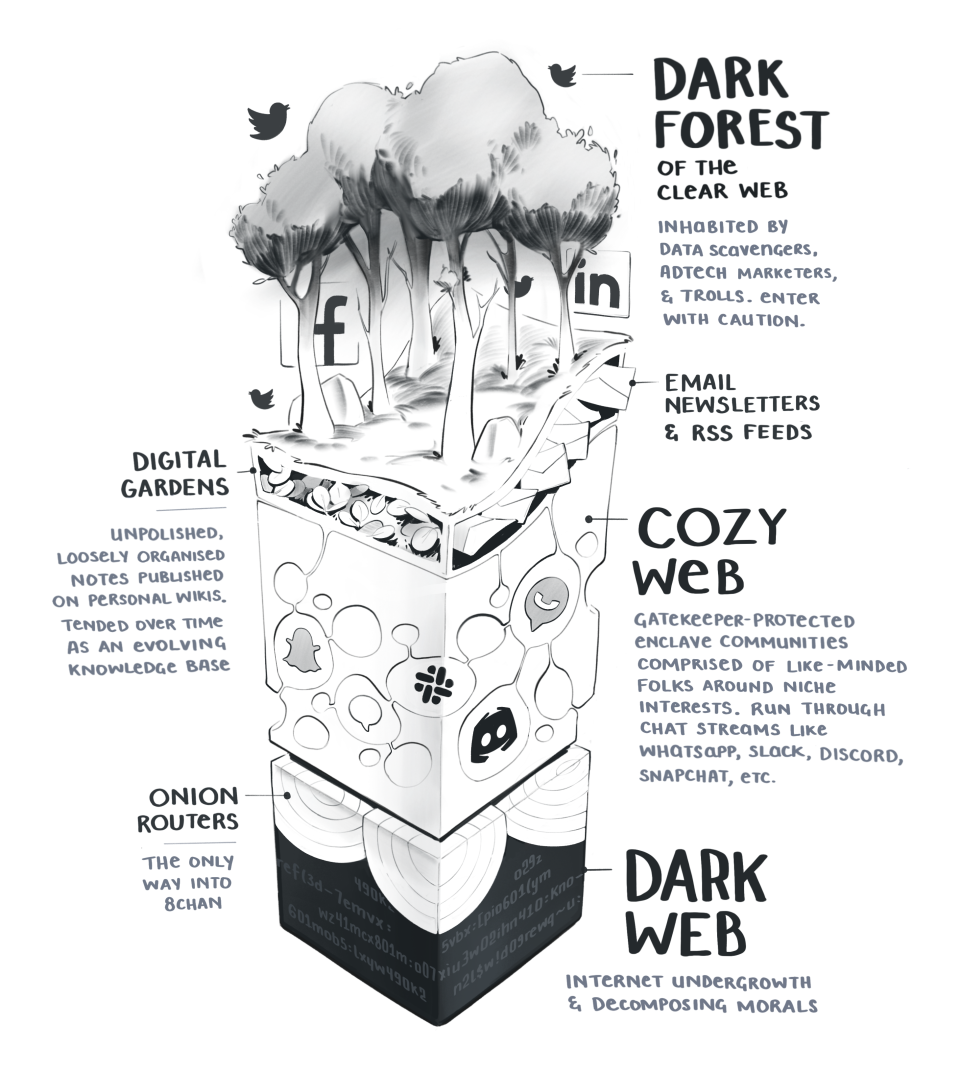Related: Moving Castles, cozy software
Source: The Dark Forest Theory of the Internet by Yancey Strickler
Imagine a dark forest at night. It’s deathly quiet. Nothing moves. Nothing stirs. This could lead one to assume that the forest is devoid of life. But of course, it’s not. The dark forest is full of life. It’s quiet because night is when the predators come out. To survive, the animals stay silent.
Cozy Web
It’s unsafe to reveal yourself to them in any authentic way. So we retreat into private spaces. We hide in the cozy web. Ephemeral content is the content in the dark forest. Fireflies not lamps.
“These are all spaces where depressurized conversation is possible because of their non-indexed, non-optimized, and non-gamified environments.”
In these cases, the specific context and audience is well-defined. More users are also turning to ‘finstas’ which are accounts focused for a closed group of friends and family rather than the entire public internet.
How can we create digital mindfulness in communication and conversation?
 Illustration from Maggie Appleton’s Cozy Web
Illustration from Maggie Appleton’s Cozy Web
Handmade Web
From J.R. Carpenter’s A Handmade Web
I evoke the term ‘handmade web’ to refer to web pages coded by hand rather than by software; web pages made and maintained by individuals rather than by businesses or corporations; web pages which are provisional, temporary, or one-of-a-kind; web pages which challenge conventions of reading, writing, design, ownership, privacy, security, or identity.
The Small Web
In the 1990s, browser design took nearly the opposite approach, using iconography associated with travel to convey the feeling of going on a journey. Netscape Navigator, which used a ship’s helm as its logo, made a very direct link with the nautical origins of the prefix cyber-, while Internet Explorer’s logo promised to take the user around the whole globe.
A painter wouldn’t add more red to her painting or change the composition because market data showed that people liked it better. It’s her creative vision; some people might like it, others might not. But it is her creation, with her own rules. The question of “performance” is simply irrelevant. It’s the same thing with the small web.
If the commercial web is “industrial”, you could say that the small web is “artisanal”. One is not better than the other. They serve different needs and both can co-exist in an open web.